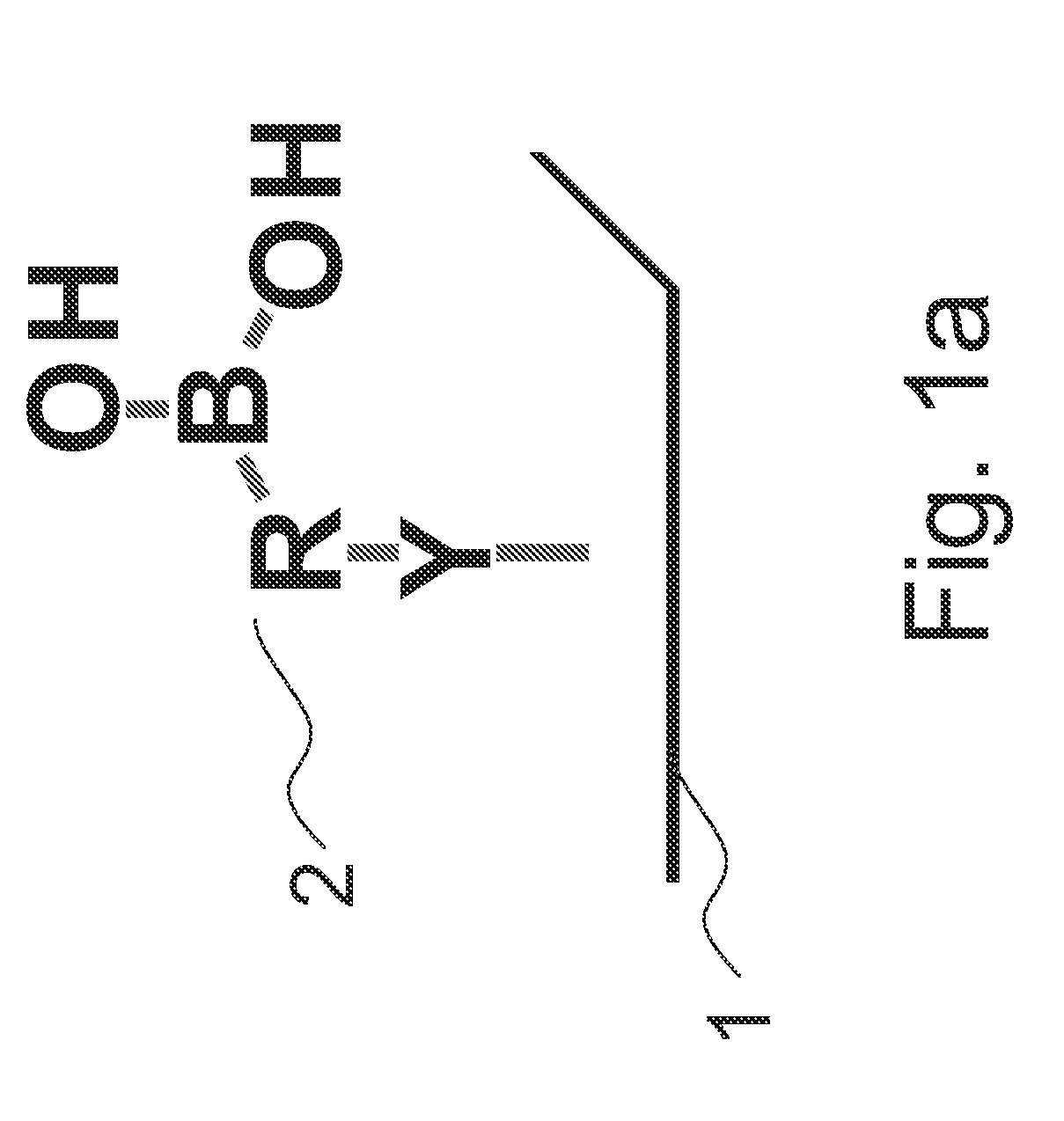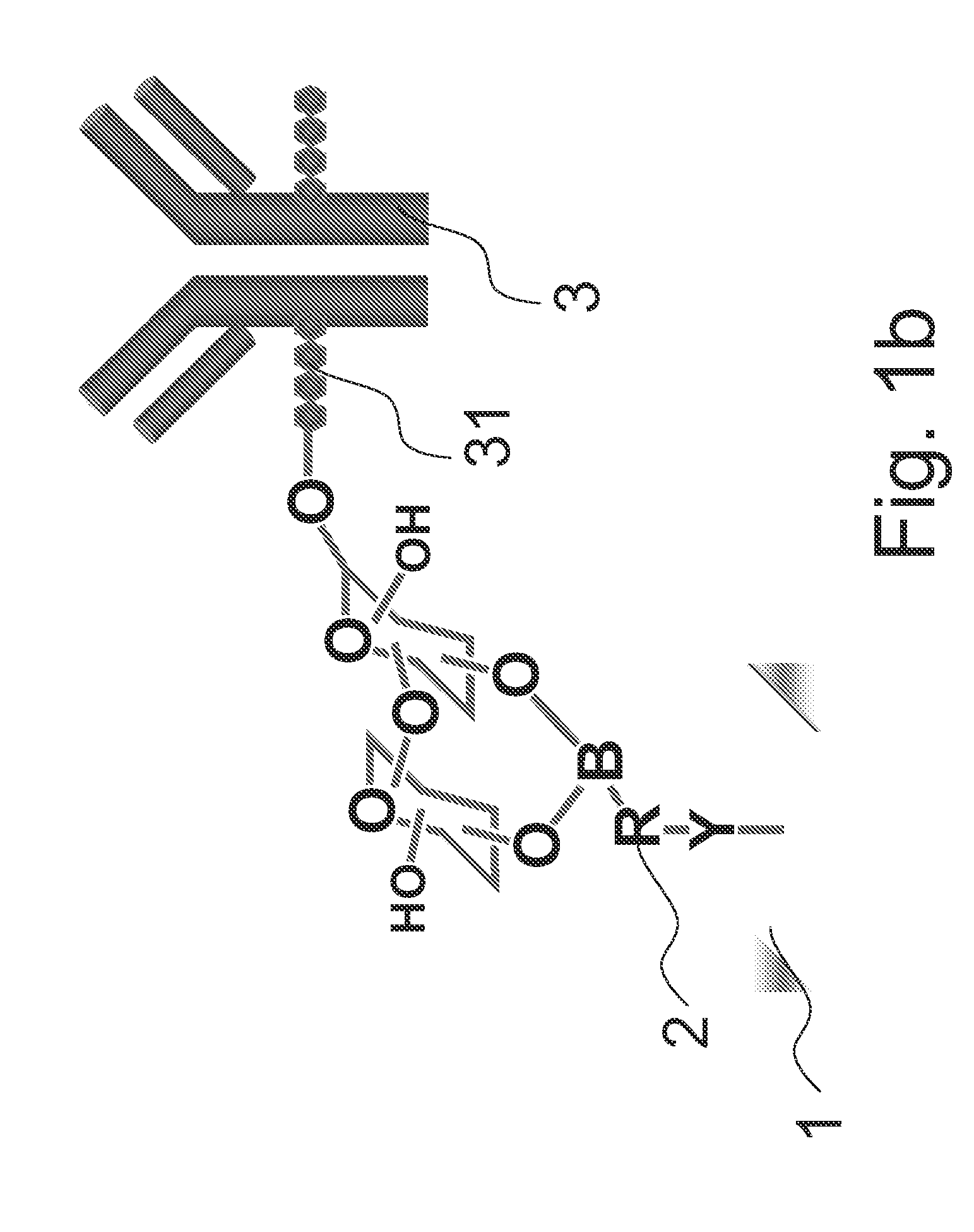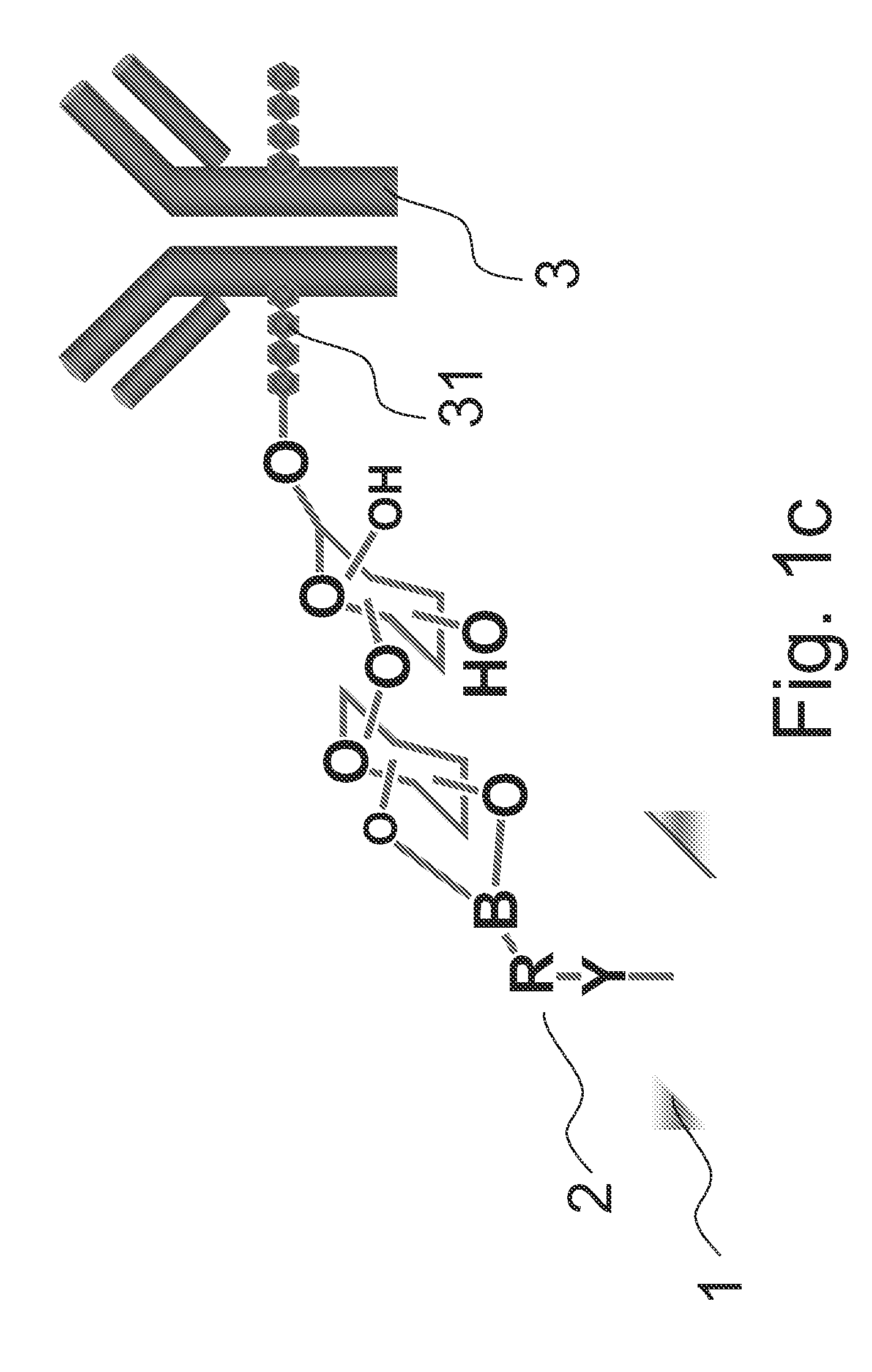Method for immobilizing glycoprotein
a glycoprotein and immobilization technology, applied in the field of immobilization glycoprotein, can solve the problems of reducing the function of antibodies to a point that is inadequate, and the non-covalent coupling between antibodies and proteins is likely to be subject to dissociation
- Summary
- Abstract
- Description
- Claims
- Application Information
AI Technical Summary
Benefits of technology
Problems solved by technology
Method used
Image
Examples
Embodiment Construction
[0018]FIGS. 1a and 1b illustrate a method for immobilizing glycoprotein according to an embodiment of the present invention. As illustrated in FIG. 1a, first, a surface 1 is provided. A boronic acid 2 is then contacted to the surface 1, wherein the boronic acid 2 is represented as Y—R—B—(OH)2 and includes a boronic acid group B—(OH)2, a linker R bonded to the boronic acid, and a functional group Y bonded to the linker R, in which the boronic acid 2 is bonded to the surface 1 via the functional group Y as illustrated in FIG. 1a.
[0019]The linker R of the boronic acid 2 includes an alkyl group, an alkoxy group, an alkyl ether group, an alkyl sulfide, a cycloalkyl group, a heterocyclyl group, an aryl group or a heteroaryl group. In an embodiment, the linker R further includes an auxiliary substituent X substituted phenyl ring for modulating the electrons in the boronic acid group.
[0020]In phenyl ring of the linker R, the auxiliary substituent X may comprise an boronic acid binding faci...
PUM
| Property | Measurement | Unit |
|---|---|---|
| pKa | aaaaa | aaaaa |
| hydrogen bond | aaaaa | aaaaa |
| covalent | aaaaa | aaaaa |
Abstract
Description
Claims
Application Information
 Login to View More
Login to View More - R&D
- Intellectual Property
- Life Sciences
- Materials
- Tech Scout
- Unparalleled Data Quality
- Higher Quality Content
- 60% Fewer Hallucinations
Browse by: Latest US Patents, China's latest patents, Technical Efficacy Thesaurus, Application Domain, Technology Topic, Popular Technical Reports.
© 2025 PatSnap. All rights reserved.Legal|Privacy policy|Modern Slavery Act Transparency Statement|Sitemap|About US| Contact US: help@patsnap.com



